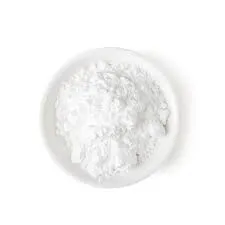Exploring the Structure and Applications of Ammonium Thiocyanate
Ammonium thiocyanate, with the chemical formula NH4SCN, is an intriguing compound notable for its various applications and unique structural properties. As a salt, it comprises ammonium (NH4+) and thiocyanate (SCN-) ions, resulting from the neutralization of ammonia and thiocyanic acid. Understanding its structure and characteristics can shed light on its uses in different fields, including chemistry, material science, and agriculture.
Structural Characteristics
The structure of ammonium thiocyanate is characterized by its ionic nature. The compound exists as a white crystalline solid at room temperature and has a relatively high solubility in water. The ammonium ion (NH4+) is a positively charged polyatomic ion, while the thiocyanate ion (SCN-) carries a negative charge, making their interaction primarily ionic in nature.
In the crystalline state, these ions assemble in a lattice structure, where the NH4+ ions are surrounded by SCN- ions and vice versa. The arrangement allows for strong electrostatic forces between the ions, contributing to the stability of the compound. When dissolved in water, ammonium thiocyanate dissociates into its constituent ions, which can interact with other molecules in solution, making it useful in various chemical reactions.
Chemical Properties
Ammonium thiocyanate exhibits several interesting chemical properties. It is known for its ability to act as a reagent in chemical synthesis, particularly in the formation of other thiocyanate salts. The thiocyanate ion is versatile, participating in diverse chemical reactions, including those that form coordination complexes with transition metals. This property makes ammonium thiocyanate valuable in analytical chemistry, where it can be employed to precipitate metal ions or to determine the presence of specific elements.
One notable reaction involves the use of ammonium thiocyanate in the detection of iron (III) ions
. When mixed with an iron solution, it produces a characteristic deep red complex, ferric thiocyanate, which is often used as a colorimetric method for assessing iron concentration in various samples.ammonium thiocyanate structure

Thermal Properties
In addition to its chemical reactivity, ammonium thiocyanate also undergoes interesting thermal transformations. When heated, it decomposes to release ammonia and thiocyanic acid. Moreover, the compound is endothermic, absorbing heat during dissolution, which provides practical applications in temperature control. This property allows ammonium thiocyanate to be utilized in endothermic cooling packs, where the absorption of heat produces a cooling effect, ideal for first aid treatments or as a component in refrigeration systems.
Applications
The applications of ammonium thiocyanate are diverse and range across many fields. In agriculture, it is often used to provide thiocyanate ions that can enhance soil properties and aid in plant growth. The compound serves as a nitrogen source, essential for plant metabolism, and its use in fertilizers can promote higher yields in crops.
In the realm of industrial chemistry, ammonium thiocyanate is used in the synthesis of various organic compounds and as an extractant in metal recovery processes. Additionally, its ability to facilitate the formation of metal thiocyanate complexes has made it a crucial reagent in analytical procedures.
Conclusion
Ammonium thiocyanate stands out due to its unique structural characteristics and versatile applications. Its ionic nature, combined with its chemical and thermal properties, makes it an essential compound across a variety of fields. Understanding the intricacies of its structure not only enhances our grasp of its behavior in different environments but also inspires further exploration into its potential applications. Whether in the lab, the field, or in industrial processes, ammonium thiocyanate continues to play a vital role in advancing our technological and scientific pursuits. Its contributions, ranging from agricultural enhancements to analytical chemistry, solidify its importance as a compound worthy of further study and application.

